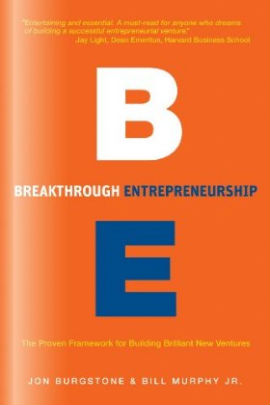
Why Customer Pain Is Your Most Important Resource
If your product is gonna stick, it needs to address your customers’ pain points–whether they can articulate them or not. Thankfully, some very smart people have thought about this.
How does an entrepreneur identify what customers will buy before the products or services exist? To answer that question, it helps to address another question first: Why does anybody buy anything?
At the most basic level, people typically spend money on two things:
First, they readily spend money to combat pain. Second, they spend money to pursue pleasure.
We list pain and pleasure in that order for a reason. All things being equal, the more acute the pain or problem, the more likely it is that you’ll be able to offer a compelling solution. The more compelling the solution, the more quickly the customer will pay. From an entrepreneur’s perspective this means that it’s often better to be in a “pain business” than a “pleasure business.” There is simply more staying power in pain-solving businesses.
So, look for the pain. Think of things that people find disturbing, frustrating, urgent or uncomfortable. Then, with the pain clearly recognized and in mind, switch gears and develop cures. Focus on healing. Let that be your guide as you try to invent a venture that will make the pain go away.
There is one more component here. You want to focus not just on identifying what the pain is, but also figuring out when people feel it most pressingly. It’s almost always easier to sell a solution to a current, intense pain than to solve something less acute. If you’ve ever had to call a locksmith or a plumber in an emergency, you’ll understand this point almost intuitively. It’s easier to sell somebody a new car when he or she has just learned that the faithful old clunker will need a $1,500 repair job. It’s easier to sell aspirin than vitamins.
One final thing to consider: the customer and the end user are not necessarily the same person. If you sell games and toys for example, often your users might be children, but the customers who actually buy your products are probably their parents. Likewise, if you run an Internet search on Google, you’re Google’s user, but it’s only when you purchase Google AdWords that you become Google’s customer.
Testing for Customer Pain
There’s a simple method for figuring out whether your new venture idea will address a real customer pain. It comes down to this: Can you describe the pain your company solves–and why anyone should care–in just a few words? Can you then persuade a prospective customer to purchase your product using your simple explanation?
If so, congratulations. You’re miles ahead of most entrepreneurs. Innovators and founders who need paragraphs to describe their market or persuade potential customers demonstrate that they haven’t refined their businesses sufficiently.
This works in reverse as well. Think of the some of the most successful companies in the world and also of some of the companies we’ve used as examples already. For the truly great ones, you can probably describe very quickly what they do and thus what customer pain they exist to solve. Apple exists because people want elegant technology. Google exists because advertisers want to reach customers effectively. Starbucks exists because people are addicted to caffeine.
Identify Intangible Needs
Many customer needs are for things the customers themselves don’t fully understand or articulate. Why buy an iPod instead of a less expensive MP3 player? Why drive a Lexus instead of a Toyota? Why pick one brand of artificially sweetened carbonated beverage over another one? Usually the answers to these questions have less to do with features than with image, feelings and intangibles.
It’s easy to become a cynic when we look at intangible needs as part of customer pain. Sure, some intangible needs can seem silly, but many others are legitimate, even vital. Sometimes as an entrepreneur, these are the most intense kinds of pain you can address.
Find New Customer Pain

The process of creative destruction often leads to the creation of new customer pain. For example, nobody needed an auto mechanic until entrepreneurs started building cars. Nobody needed identity theft protection or credit monitoring until entrepreneurs created the personal credit report to address problems in lending and borrowing money.
Apple first unveiled the iPod during the heyday of Napster, when people could share songs with each other for free via the Internet. Yet, consumers’ widespread adoption of the product confirmed for Apple a new, unmet need: Customers wanted to be able to get music quickly, easily, relatively cheaply, and perhaps most important, legally. The result was iTunes, which grew into one of Apple’s most successful products.
At the same time, Apple designed the iPod so that it could be used only with headphones (earbuds, in the company’s nomenclature). Thus, users had a great new way to transport and play music but no way to play it loud enough to share. Users developed new pain and many other companies developed complementary products like external speakers and docking stations.
From Breakthrough Entrepreneurship by Jon Burgstone and Bill Murphy, Jr. Copyright © 2011-2012 by Jon Burgstone and Bill Murphy, Jr. Reprinted by permission of Farallon Publishing.
[Image: Flickr user Shandi-lee Cox]
Original document, Why Customer Pain Is Your Most Important Resource
Source:https: Fast Company
Adapted for Academy.Warriorrising

